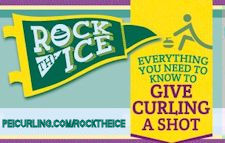By JOHN KOROBANIK
HeartChart Writer
This year’s edition of the Scotties Tournament of Hearts is into its final stages of determining a champion and as the top teams emerge, as expected, the question arises: in what direction is women’s curling headed in Canada?
It is becoming obvious, the curlers themselves agree, that there is a widening gap developing between a handful of elite teams
— those who compete on a regular basis on the Tour – and the majority of other teams competing here.
“For sure,” veteran skip Mary-Anne Arsenault of Nova Scotia says of the growing gap. “Amongst the top teams, they have all the funding, they get to play on this great ice all the time and you only get better when you‘re able to play with these beautiful conditions all the time and you have funding.”
Michelle Englot, 54-year-old skip of Team Canada and an eight-time Saskatchewan champion, has seen a lot of changes in the game during her career and while most of them have been good, she says it has become tougher for women to keep pace with the elite teams unless they’re willing to make significant sacrifices.
For starters, they need a job with an understanding boss who allows them to take off much of the winter months.
“That’s the part that’s separating the Tier 1 curlers from the Tier 2 curlers, so that’s one aspect I think we really need to look at,” Englot said recently. “How many full-time curlers are playing at the top level right now? You need to make that commitment in order to compete against the Rachel Homans and the Jennifer Joneses and it’s tough for people who do have small children and who do have full-time jobs, to be able to compete.”
The number of elite women’s teams is decreasing she suggests and that is “the only aspect of the sport that I don’t know if it’s best for the sport. The goal is to get to the Scotties and Brier and everybody can achieve that because it’s open access if you can make the commitment, but the commitment you need now it’s become a bit of a stretch. That gap is bigger and I’m not sure that’s good for the sport long-term.”
It’s not just on the women’s side where teams skipped by Englot, Jennifer Jones and Kerry Einarson were considered shoo-ins to get the final four before this year’s Scotties even began. On the men’s side the field for major events often splits early with teams skipped by the likes of Kevin Koe, Brad Gushue and Brad Jacobs separating themselves.
Robyn McPhee, 34-year-old skip of the Prince Edward Island team, agrees there’s definitely a noticeable split among the women.
“There’s probably the top 10 teams that are Slam teams and some of them are funded, so they have more access to everything. The rest of us, this is what we play for all year.
“I don’t think (it’s a good thing long term). I think curling needs to develop all over, not just at the top so it’s important to keep the youth interested and get them going.”
Jill Officer, a five-time Scotties champion second on the Jones team, says the gap is widening “across the board” in curling.
“The top teams are putting more time in and not working full-time and getting more sponsorship. We have a lot more TV time with the Slams so that bodes well for selling sponsorship.”
Officer thinks part of the reason for the separation is it’s getting harder to be able to work full time and compete at the elite level.
That’s something teams like Ontario are finding out. Scotties rookie Hollie Duncan is skip of that team that managed to win a tiebreaker Thursday morning to stay alive.
“More and more teams are taking it as a fulltime job now,” she notes. “We don’t. We all have jobs and we didn’t play a ton of spiels this year, but we felt so far we have been able to keep up. I mean, this isn’t the slam, you don’t have all the top teams in Canada here so it’s a little bit different.
“But I do notice a difference and I think you can see it in the draws, there’s a lot of blowouts.”
“Plus, the rest of the world has caught up to us,” adds Officer. “They maybe don’t have the depth we have in Canada, but the teams they do have are fully funded and they’re able to curl on a full-time basis, which allows them to be better. In order for us to keep up we have to do certain things and that means a bigger gap here in Canada.”
So what does the future hold for curling, particularly major events like the Scotties?
“I’m not sure,” said Arsenault, a five-time Scotties champion and two-time world champion curling with Colleen Jones. “I think eventually there will probably be a separation where the Scotties is an amateur event and the Slams are professional events, it could happen.”
Duncan said she can see it headed that way as well and doesn’t think it’s a good thing.
“To me it’s a bit of a shame because then there might not be as bright of a spotlight on it and it is
such a special thing to come here and experience it. So I see it happening but I think it will be a shame.”







